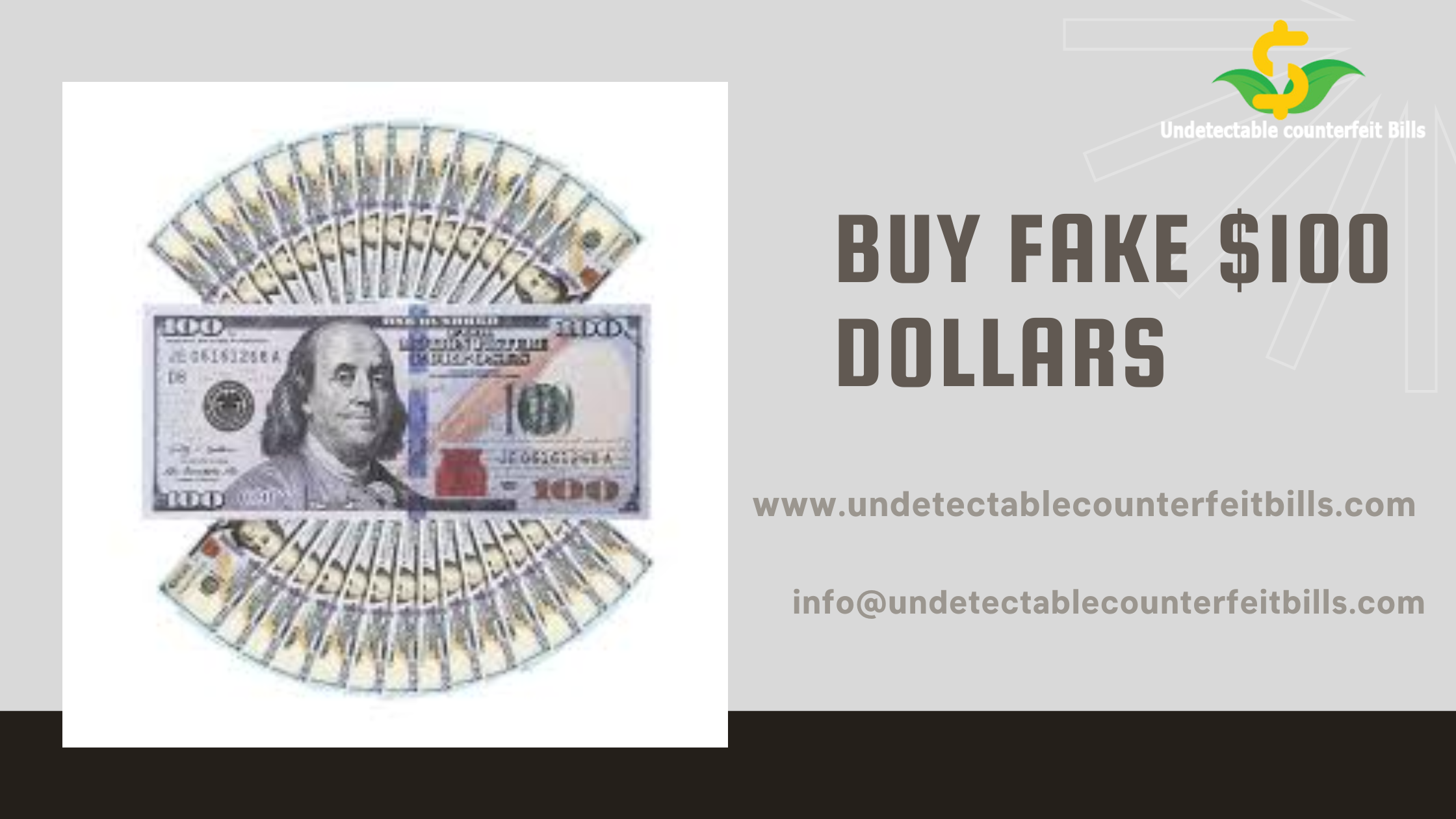Buy fake $100 dollars is crucial when it comes to money. Nevertheless, there is still a market for counterfeit money, with fake $100 bills being among the most common. It is imperative that individuals and organizations alike comprehend the subtleties of counterfeit money in order to protect themselves from monetary loss and potential legal consequences.
Define the Issue
Counterfeit $100 bills are replicas of genuine U.S. currency, meticulously crafted to deceive unsuspecting recipients. Despite security measures implemented by the U.S. Department of the Treasury, counterfeiters continuously adapt, making detection challenging.
Relevance and Importance
The proliferation of fake currency not only undermines the integrity of the financial system but also poses significant risks to businesses and consumers alike. Recognizing the signs of counterfeit bills is essential for mitigating potential losses and maintaining trust in transactions.
Types and Categories
Counterfeit bills vary in quality and sophistication, ranging from amateur replicas to professionally produced counterfeits indistinguishable from genuine currency.
Production Methods
Counterfeit bills are typically produced using offset printing, digital printing, or a combination of both techniques. Advanced counterfeiters employ high-resolution scanners and printers to replicate intricate details.
Quality Spectrum
Counterfeit bills can be categorized based on their quality, ranging from low-quality replicas with obvious flaws to high-quality counterfeits that closely resemble genuine currency.
Symptoms and Signs
Identifying counterfeit $100 bills requires keen observation and familiarity with security features embedded in authentic currency.
Visual Inspection
Inspecting the overall appearance of the bill can reveal discrepancies in color, texture, and printing quality. Genuine bills feature sharp, detailed images and consistent coloring, while counterfeit bills may appear faded or blurred.
Security Features
Genuine $100 bills incorporate various security features, including watermarks, security threads, and color-shifting ink. Counterfeit bills often lack these features or exhibit inconsistencies in their implementation.
Ultraviolet Light Detection
Ultraviolet light can reveal hidden security features embedded in genuine currency, such as fluorescent threads and markings. Counterfeit bills may emit different fluorescence patterns or lack fluorescence altogether.
Causes and Risk Factors
Counterfeiting currency is driven by various factors, including technological advancements, economic instability, and organized crime.
Accessibility of Technology
Advancements in printing technology and digital imaging have made it easier for counterfeiters to produce convincing replicas of currency.
Economic Motivations
The allure of financial gain motivates counterfeiters to produce fake currency, especially in regions experiencing economic hardship or currency devaluation.
Organized Crime Syndicates
Sophisticated counterfeit operations often involve organized crime syndicates with access to resources and expertise in manufacturing counterfeit currency.
Diagnosis and Tests
Detecting counterfeit Buying fake $100 requires a combination of visual inspection, tactile examination, and the use of counterfeit detection tools.
Visual Examination
Carefully scrutinizing the bill for irregularities in printing, alignment, and texture can help identify potential counterfeits.
Tactile Inspection
Feeling the texture of the bill and examining raised features, such as the portrait of Benjamin Franklin, can reveal inconsistencies indicative of counterfeit currency.
Counterfeit Detection Pens
Counterfeit detection pens can detect counterfeit bills by reacting to the presence of starch in counterfeit paper. However, these pens are not foolproof and may yield false positives or negatives.
Treatment Options
Addressing counterfeit currency involves implementing preventive measures, enhancing public awareness, and leveraging technology for detection.
Public Education Campaigns
Educating businesses and consumers about the security features of genuine currency can help prevent the circulation of counterfeit bills.
Enhanced Security Features
Continuously improving the security features of currency, such as introducing advanced holograms and microprinting, can deter counterfeiters and facilitate detection.
Collaboration with Law Enforcement
Cooperation between financial institutions, law enforcement agencies, and government entities is essential for investigating counterfeit operations and apprehending counterfeiters.
Preventive Measures
Preventing counterfeit currency circulation requires vigilance, diligence, and adherence to best practices in currency handling.
Training and Awareness
Providing training to employees on how to detect counterfeit currency and fostering a culture of awareness can minimize the risk of accepting fake bills.
Verification Technologies
Investing in counterfeit detection devices, such as ultraviolet lamps and automated scanning systems, can streamline the verification process and enhance accuracy.
Transaction Verification
Verifying the authenticity of large transactions or high-value bills through additional scrutiny and verification measures can mitigate the risk of counterfeit currency acceptance.
Personal Stories or Case Studies
Real-life encounters with counterfeit currency underscore the importance of vigilance and diligence in currency handling.
The Retail Dilemma
Retail businesses often fall victim to counterfeit schemes, highlighting the need for robust counterfeit detection protocols and employee training.
Individual Experiences
Instances of individuals unwittingly receiving counterfeit bills serve as cautionary tales, emphasizing the importance of verifying currency authenticity before transactions.
Expert Insights
Insights from experts in finance, law enforcement, and counterfeit detection shed light on the complexities of counterfeit currency and strategies for combating it.
Financial Analyst Perspective
Financial analysts emphasize the economic impact of counterfeit currency on businesses, governments, and consumers, stressing the need for proactive measures to mitigate losses.
Law Enforcement Strategies
Law enforcement officials discuss investigative techniques and legal frameworks aimed at dismantling counterfeit operations and prosecuting offenders.
Conclusion: Buy fake $100 Dollars
In conclusion, counterfeit $100 bills pose significant challenges to businesses and consumers, requiring proactive measures and collaboration to combat. By enhancing public awareness, leveraging advanced detection technologies, and fostering cooperation between stakeholders, we can safeguard against the proliferation of counterfeit currency and preserve the integrity of the financial system.

